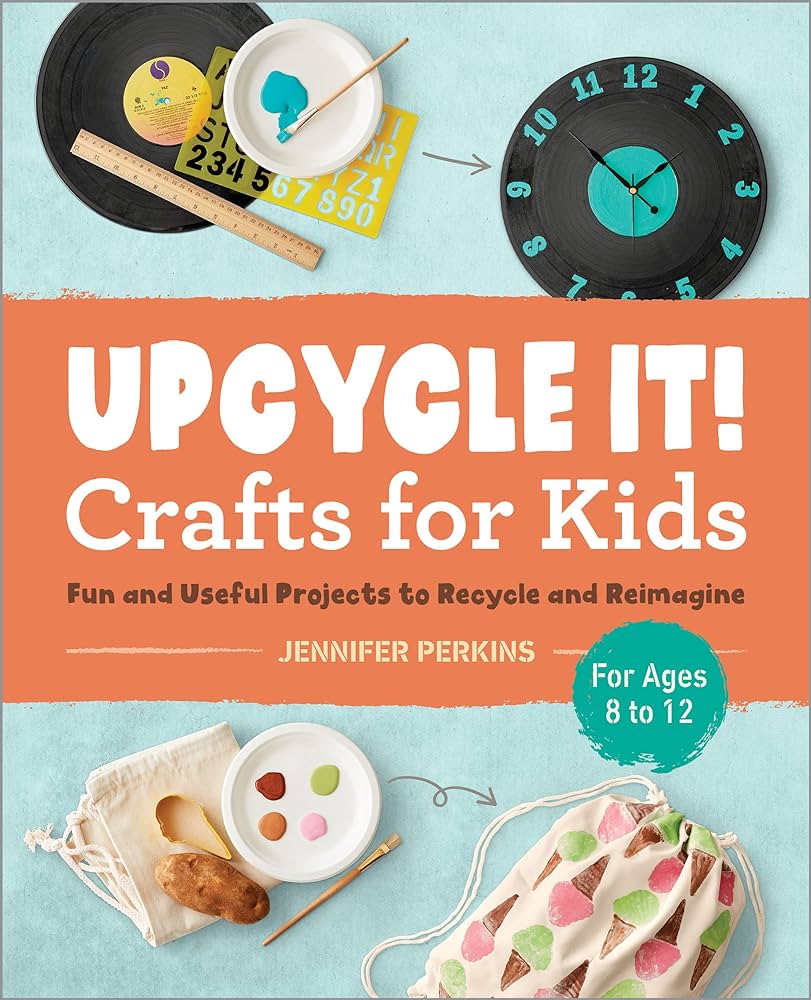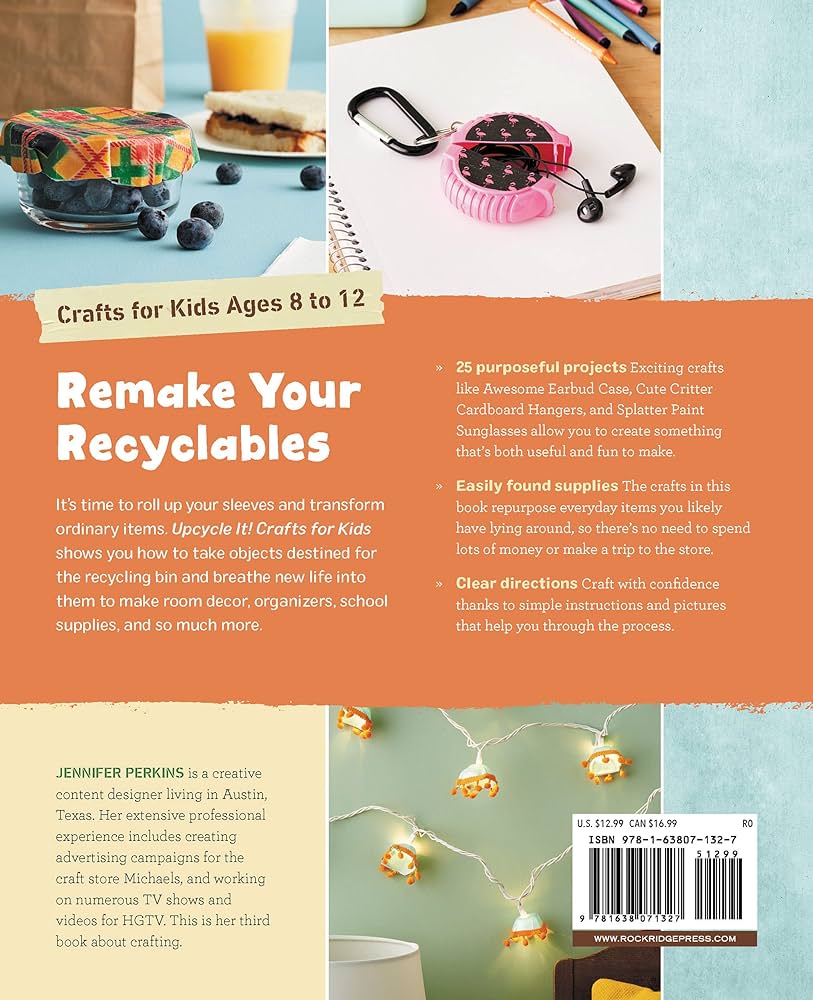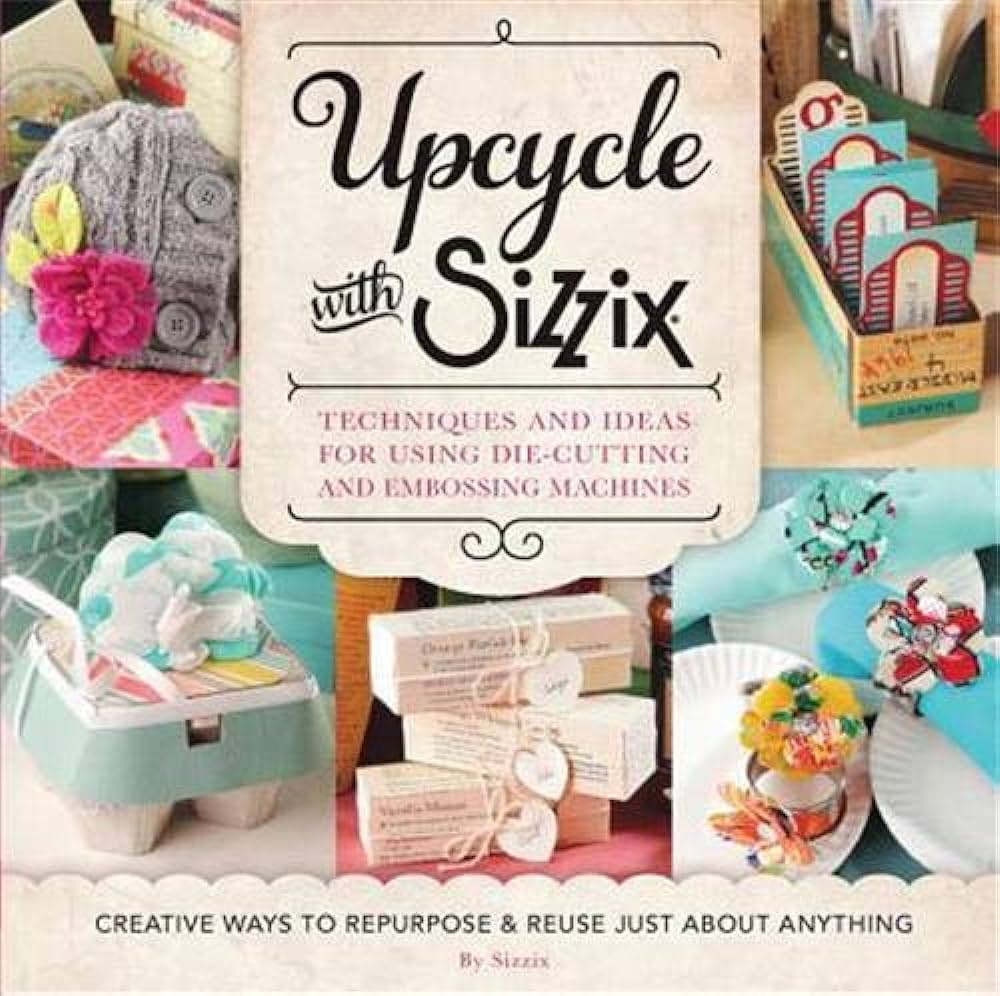Discover the enchanting world of upcycling, where everyday items are transformed into beautiful crafts that are both sustainable and one-of-a-kind. In this article, you will uncover the magic behind repurposing objects and discover a treasure trove of ideas and tutorials to inspire your own upcycled creations. Get ready to embark on a creative journey as you explore the endless possibilities of breathing new life into old items and uncover the beauty that lies within them. Let your imagination soar as you delve into the world of upcycling magic.

1. Understanding Upcycling
Defining upcycling
Upcycling is the process of taking old or discarded materials and transforming them into new and improved products. Unlike recycling, where the materials are broken down and used to create new items, upcycling involves repurposing the materials in their existing form. It is a creative and sustainable way to give new life to used items while reducing waste.
Difference between upcycling and recycling
While upcycling and recycling both aim to reduce waste and promote sustainability, there is a key difference between the two. Recycled items are broken down into raw materials which are then used to create new products. In contrast, upcycling involves finding new uses for existing items without breaking them down. Upcycling allows for more creativity and individuality, as it often involves transforming the original item into something completely different.
Benefits of upcycling
Upcycling offers numerous benefits, both for individuals and the environment. Firstly, it helps reduce waste by giving new life to old items that would otherwise end up in landfills. By upcycling, you are actively contributing to the conservation of resources and the preservation of our planet. Additionally, upcycled items often have a unique and one-of-a-kind charm that cannot be found in mass-produced products. Upcycling also promotes creativity and innovation, as you are challenged to think outside the box and find new uses for old materials.
2. Exploring Upcycled Materials
Using discarded household items
One of the best places to start with upcycling is right in your own home. Look around for items that you no longer use or need, such as empty glass jars, old magazines, or broken pieces of furniture. These items can be transformed into beautiful and functional crafts with a little creativity and imagination. For example, glass jars can be repurposed as storage containers or decorative candle holders, while old magazines can be turned into unique collages or rolled up to create colorful paper beads.
Repurposing furniture and accessories
Old furniture and accessories can also be excellent candidates for upcycling projects. Consider giving an old wooden chair a fresh coat of paint or reupholstering it with a vibrant fabric to create a statement piece for your home. Don’t be afraid to think outside the box and repurpose items in unexpected ways. That old ladder you no longer use? It can be repurposed as a stylish bookshelf or a unique plant stand. The possibilities are endless when it comes to upcycling furniture and accessories.
Collecting materials from nature
Nature provides an abundance of upcycling materials just waiting to be transformed. Fallen branches and twigs can be used to create rustic picture frames or decorative wreaths. Seashells collected from the beach can be turned into beautiful jewelry or incorporated into mosaic artwork. By incorporating natural elements into your upcycling projects, you not only give new life to discarded materials but also bring a touch of the outdoors into your home.

3. Tools and Equipment
Basic tools for upcycling
Getting started with upcycling doesn’t require a lot of specialized tools. In fact, many projects can be completed with basic tools that you likely already have at home. These may include a hammer, screwdriver, pliers, glue gun, scissors, and paintbrushes. These tools will be essential for dismantling and reassembling items, as well as adding new elements to your upcycled crafts.
Specialized equipment for specific projects
While basic tools are sufficient for most upcycling projects, there may be certain projects that require specialized equipment. For example, if you plan to upcycle old fabric into clothing or accessories, you may need a sewing machine. If you’re working with metal or glass, specific cutting tools may be necessary. It’s important to assess the requirements of your project beforehand and invest in any necessary tools or equipment to ensure a successful outcome.
Safety precautions
As with any DIY project, safety should always be a priority. When upcycling, be sure to wear appropriate protective gear, such as gloves, safety glasses, and a mask when working with potentially hazardous materials. Use tools responsibly and follow instructions carefully to avoid accidents or injuries. Additionally, ensure that the area in which you’re working is well-ventilated and properly organized to minimize risks. By taking these safety precautions, you can enjoy the upcycling process while ensuring your well-being.
4. Inspiration from Upcycling Artists
Profile of renowned upcycling artists
There are many talented artists who have made a name for themselves in the world of upcycling. Take some time to explore the work of renowned upcycling artists like Sarah Turner, who creates stunning sculptures using recycled plastic bottles, or Tom Deininger, who transforms discarded objects into intricate collage artwork. Researching and learning about these artists can provide valuable inspiration and insight into different techniques and approaches to upcycling.
Examining their unique techniques
Each upcycling artist has their own unique approach and techniques that contribute to the distinctiveness of their work. Sarah Turner, for instance, uses heat to manipulate plastic bottles into intricate shapes, creating multi-dimensional sculptures. Tom Deininger, on the other hand, meticulously arranges and glues together various discarded objects to form detailed and visually captivating collages. By examining and understanding the techniques of upcycling artists, you can incorporate their methods into your own projects and develop your own unique style.
Learning from their creative process
Beyond techniques, studying the creative process of upcycling artists can offer valuable insights and ideas. Many artists share their experiences and thoughts on their journey towards creating upcycled masterpieces. They often emphasize the importance of experimentation, embracing imperfections, and finding beauty in unexpected places. By learning from their creative process, you can gain a deeper appreciation for the art of upcycling and apply their principles to your own projects.

5. Upcycled Home Decor
DIY projects for transforming living spaces
Creating upcycled home decor allows you to infuse your living spaces with your own unique style while being environmentally conscious. Start by considering the overall theme or aesthetic you want to achieve. For a rustic look, repurpose old wooden pallets into wall shelves or coffee tables. If you prefer a more whimsical vibe, transform old teacups into charming hanging planters or use vintage frames to create a gallery wall. The key is to let your creativity guide you and think outside the box when it comes to repurposing items for your home.
Creating unique wall art
Upcycled wall art can add a touch of personality and charm to any room. One idea is to use reclaimed wood or old picture frames as the base for a statement wall art piece. Attach various upcycled materials, such as bottle caps, broken tiles, or discarded jewelry, to create a visually interesting and textured composition. Another option is to repurpose old vinyl records or CDs by painting or embellishing them with unique designs, transforming them into eye-catching wall decorations.
Repurposing furniture for a new look
Instead of buying new furniture, consider giving your existing pieces a makeover through upcycling. Sanding down an old table and applying a fresh coat of paint can completely transform its look and breathe new life into your space. Reupholstering worn-out chairs with vibrant fabrics can give them a unique and personalized touch. Don’t be afraid to experiment with different techniques, such as decoupage or stenciling, to add extra flair to your upcycled furniture.
6. Upcycled Fashion and Accessories
Making fashionable clothing from old garments
Upcycled fashion is not only an environmentally friendly choice but also allows you to create clothing that reflects your personal style. Start by assessing your wardrobe for garments that are no longer worn or are in need of repair. Consider repurposing old jeans into a trendy denim skirt or transforming a vintage dress into a stylish top. Get creative with patchwork techniques, adding lace or embellishments for a unique touch. By upcycling clothing, you can give new life to old favorites and even create one-of-a-kind statement pieces.
Creating statement accessories
Accessories are an excellent way to add flair to any outfit, and upcycling offers endless possibilities for unique and personalized pieces. For example, repurposing old belts into colorful and textured bracelets or transforming broken vintage earrings into striking pendant necklaces. By combining different materials and styles, you can create memorable and conversation-starting accessories that reflect your creativity and individuality.
Revamping vintage jewelry
Vintage jewelry often holds sentimental value but may no longer be in style or in wearable condition. Upcycling allows you to breathe new life into these cherished pieces. Give tarnished silver jewelry a new shine with a simple cleaning solution or restring old beads into a fresh and modern necklace. Unleash your creativity by mixing and matching different elements to create updated and unique jewelry pieces. By upcycling vintage jewelry, you not only preserve its sentimental value but also contribute to sustainable fashion.

7. Upcycled Gifts and Personalized Items
Unique gift ideas using upcycled materials
One of the best things about upcycling is that it allows you to create thoughtful and unique gifts using materials that would otherwise go to waste. Consider repurposing vintage teacups into personalized candles, transforming old wine bottles into elegant lanterns, or using discarded fabric scraps to create a cozy quilt. The effort and creativity put into upcycled gifts make them extra special and memorable for the recipient.
Personalized crafts for special occasions
Upcycling presents an opportunity to create personalized crafts for special occasions such as birthdays, weddings, or anniversaries. For example, transform worn-out picture frames into customized photo collages, or repurpose old wine corks into unique place card holders. These personalized crafts demonstrate thoughtfulness and reflect the recipient’s interests or memories, making them truly meaningful gifts.
Tips for creating sentimental keepsakes
When creating sentimental keepsakes through upcycling, it’s important to consider the emotional value of the materials used. For instance, you could transform a loved one’s old shirt into a patchwork quilt or turn baby clothes into a stuffed animal. By repurposing items with sentimental significance, you create a lasting memento that holds cherished memories. Ensure that you handle these materials with care and pay attention to the sentimental value they hold for the recipient.
8. Upcycling for Kids
Fun and educational upcycling projects for children
Upcycling is a great way to engage children in creative and educational activities. Start with simple projects, such as turning empty toilet paper rolls into binoculars or using cardboard boxes to create a pretend play kitchen. Encourage children to think creatively and find new uses for old materials. Not only will they develop their problem-solving and artistic skills, but they will also learn about the importance of reusing and repurposing items instead of throwing them away.
Creating toys from household items
Children’s toys can often be made from everyday household items. For example, transform a shoebox into a dollhouse or use old buttons and fabric to create homemade stuffed animals. By involving children in the upcycling process, they learn to appreciate the value of resourcefulness and develop a sense of environmental consciousness from a young age. Not to mention, they can enjoy the satisfaction of playing with toys they helped create!
Teaching environmental consciousness
Upcycling is an excellent way to teach children about environmental consciousness and the importance of sustainability. Explain to them how upcycling reduces waste and conserves resources. Encourage them to come up with their own upcycling ideas and make it a family activity. By demonstrating the positive impact of upcycling, you instill in children a sense of responsibility to care for the environment and make conscious choices to minimize waste.

9. Benefits of Upcycled Creations
Reducing waste and environmental impact
Upcycling plays a crucial role in reducing waste and lessening our environmental impact. By repurposing materials that would otherwise end up in landfills, we save valuable resources and minimize pollution associated with producing new items. Upcycling helps to break the cycle of waste by extending the lifespan of objects and giving them new purposes, protecting the environment for future generations.
Saving money through upcycling
Another appealing aspect of upcycling is that it can save you money. Rather than purchasing new items, you can often find inexpensive or free materials to transform into something amazing. Thrift stores, garage sales, or even your own home can provide a treasure trove of upcycling potential. By upcycling, you not only enjoy the satisfaction of creating something unique but also save money that can be put towards other priorities.
Promoting creativity and innovation
Upcycling is a creative and imaginative process that fosters innovation. It challenges us to see the potential in discarded materials and think outside the box. By upcycling, you tap into your creativity, experiment with new techniques, and develop problem-solving skills. The possibilities are limitless, and the satisfaction of creating something beautiful and functional from seemingly ordinary objects is incredibly rewarding.
10. Tips and Techniques for Successful Upcycling
Choosing the right materials for your project
When embarking on an upcycling project, it’s important to carefully select the materials you’ll be working with. Consider the condition, durability, and compatibility of the items you plan to upcycle. Certain materials may lend themselves better to specific projects, while others may require more preparation or repair. Additionally, consider the aesthetic appeal and practicality of the materials, ensuring they meet your desired outcome.
Methods for cleaning and preparing materials
Before starting your upcycling project, it’s essential to clean and prepare the materials properly. This may involve removing any dirt, stickers, or adhesives from surfaces, sanding down rough edges, or repairing broken parts. Depending on the type of material, different cleaning and preparation techniques may be required. Research and follow appropriate methods to ensure the best results for your upcycled crafts.
Enhancing the durability and longevity of upcycled crafts
To ensure that your upcycled crafts stand the test of time, it’s important to consider ways to enhance their durability and longevity. This may involve applying protective coatings, such as varnish or sealant, to prevent wear and tear. Reinforcing weak areas with additional support or adhesives can also contribute to the longevity of your upcycled creations. Additionally, proper care and maintenance, such as regular cleaning or periodic touch-ups, can help preserve the beauty and functionality of upcycled items.
In conclusion, upcycling offers a world of possibilities for creative expression, sustainability, and reducing waste. Whether you’re transforming discarded household items, revamping furniture, or creating unique fashion and accessories, upcycling allows you to give new life to old materials while adding a personal touch to your crafts. By exploring the techniques of renowned upcycling artists, upcycling for special occasions or children, and understanding the benefits and tips for successful upcycling, you’ll open yourself up to a world of creativity and innovation. So, grab your tools, unleash your imagination, and embark on the magical journey of upcycling!


